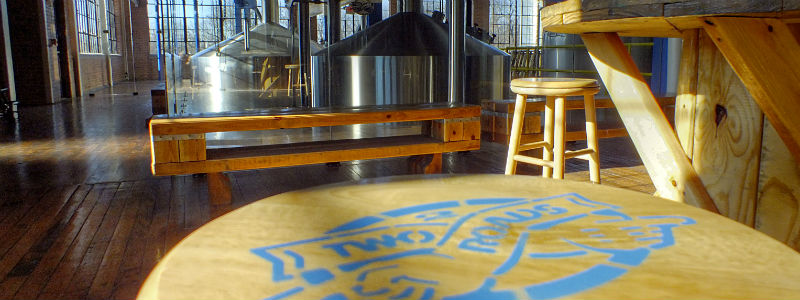
Crowded craft beer shelves don’t just show a sea of color, it always shows a swath of prices. Determining a variety of price points for craft breweries may have been easy at one point, but with a variety of sizes, container numbers in a pack and styles that can fluctuate margins because of ingredients can cause some to perhaps set a price point with very little in profit while not doing the leg work to understand how to maximize that products growth.
Connecticut’s Two Roads Brewing is looking to solve that issue with the addition of software from New Jersey’s Vistaar Technologies. The company recently announced the brewery is the first beer customer. Two Roads plans to deploy Vistaar’s price structure management (PSM) SaaS solution.
Brewer spoke with Two Roads co-founder and chief commercial officer, Clement Pellani, along with Vistaar’s Paul Greifenberger, the senior vice-president of sales and marketing, about the maneuvering that breweries can deal with in pricing its products.
BREWER: Are price points in craft beer something that has been a margin-driven issue or could it be because of consumer-driven data that shows that price points at certain volumes are more acceptable now than before craft beer became more mainstream?
PELLANI: That’s a great question. In the past, most craft beer pricing was closely aligned with just a few price tiers. Typically, the leading craft brands would set the price tiers and other craft brewers would align closely regardless of their margins and cost structures. It was something that brewers felt they had to do to compete. Contributing to this pricing parity in the market, was the fact that there was not the rich diversity in styles that we have today and consumers did not weigh as heavily whether a brand was from a small local craft brewery or a large national craft brewery in terms of pricing.
Fortunately, that has changed considerably. There is now a great diversity in products from Pilsners to Barrel Aged Sours. Consumers now place a higher value on beers from their local breweries and are willing to pay more for them. This has freed up craft brewers to break the traditional pricing tiers and have multiple price points that truly reflect the cost of the producing the beer, freight costs, scarcity, etc.
Now, as each brewery becomes more independent with how they price, understanding how the market responds to price and promotion and understanding their product margins become the drivers. Pricing and price promotions are more complex and a tool like Vistaar helps us to organize and analyze our pricing and profitability and make the best decisions in the market.
BREWER: How has the beer-selling market changed for craft beer over the years to where technology like this is needed?
PELLANI: There is increased pricing complexity between brewers, distributors, and retailers because there are more front-line price tiers and more varied deal levels today. If we want to project revenue and margin, we need to estimate how much volume will sell at each price and deal level and integrate our internal costs. Projections are never 100 percent accurate so mapping actuals to deal levels improves our ability to increase profit accuracy on an on-going basis.
GREIFENBERGER: Eight years ago, Vistaar recognized that beverage alcohol suppliers and distributors had unusually complex pricing challenges with as many as 20 deal levels active at any point in time. Beer, however, tended to have fewer pricing tiers. That’s changed. Leading beer companies are actively using pricing strategies to glean competitive advantages, and pricing complexity has thus surged. We expect the recent trends in beer pricing to elicit similar levels of interest in technology to help solve increasingly complex pricing challenges.
BREWER: What will this sort of technology be able to do to help further market information gathering and possibly improve sales?
PELLANI: As we have grown as a company, we have added more styles, package sizes, and price tiers to our portfolio and we are now sold in 12 states and the District of Columbia. Combine this growth with the fact that there are a lot of factors involved in pricing including different retail structures and laws by state, freight, taxes and retailer and distributor margins, and we have an increasingly varied and complex task to manage our pricing.
With the Vistaar solution, we can easily scenario plan by market how various price and promotion strategies work for the consumer and the complete three-tier network. This allows us to experiment more and more with price and quickly understand what pricing strategies are working to grow our sales, and what needs course correction. The key is to respond to market conditions quickly and Vistaar provides the visibility we need to make course corrections quickly.
GREIFENBERGER: Pricing decisions can at times be fraught with emotion. We typically find beer, wine, and spirits companies know what their brand’s ideal shelf price should be. However, they often walk into a store and find their products priced lower or higher than optimal. This can damage the brand and reduce sales. Pricing technology creates price plan and actualization visibility across the entire three-tier network. This increases the likelihood that price execution mirrors the price plan. When that happens, the product on the shelf will more frequently be priced optimally which results in increased sales.





Be the first to comment